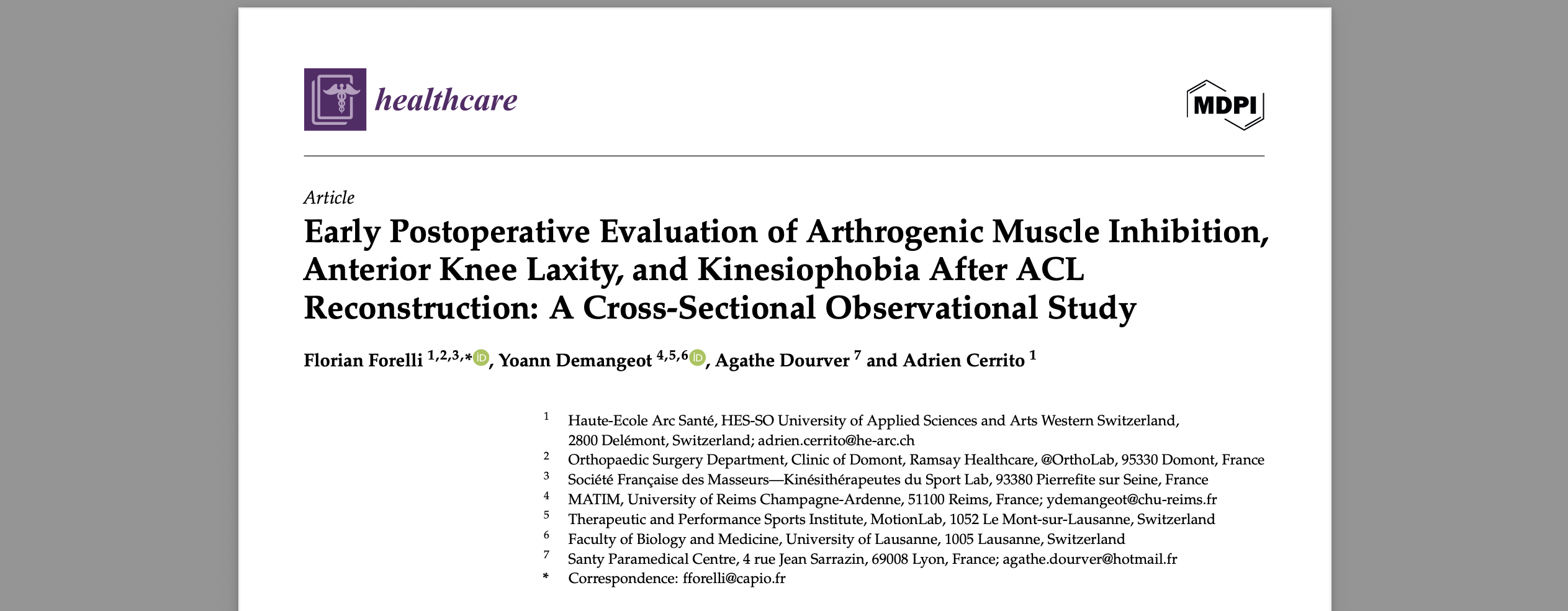Introduction
Anterior Cruciate Ligament (ACL) injuries are a prevalent and impactful concern in the world of football (soccer), arguably the most popular sport globally. These injuries not only pose a significant health risk to players but also have a profound impact on their careers and teams. The ACL, a crucial ligament in the knee, is vital for stability and movement, making it especially vulnerable in a sport characterized by rapid direction changes, jumps, and intense physical contact. The occurrence of an ACL injury can be a pivotal moment in a player’s career, often leading to prolonged absence from the field and, in some cases, permanent changes in performance levels.
The prevalence of ACL injuries in football/soccer is alarmingly high. Studies have shown that these injuries are among the most common serious injuries in athletes, particularly affecting those engaged in high-impact sports like football. The nature of the game, with its high-speed maneuvers and physical challenges, makes football players especially susceptible to such injuries. Furthermore, the impact of an ACL injury extends beyond the physical realm. It brings psychological challenges, including the fear of reinjury, which can affect a player’s performance and willingness to engage in certain maneuvers post-recovery.
Given the severity and frequency of ACL injuries in football, there has been a growing emphasis on understanding their causes, prevention, and treatment. This includes the development and utilization of advanced technologies like arthrometers, which are instrumental in early detection and monitoring of ACL health. By closely monitoring the condition of a player’s ACL, these tools play a crucial role in preventing injuries and ensuring safe and timely returns to the field. This article aims to delve into the multifaceted world of ACL injuries in football, exploring recent research findings and highlighting the crucial role of arthrometers like GNRB® and DYNEELAX® in this context.
I. ACL Injuries in Football/Soccer: An Overview
1.1 The Nature of ACL Injuries

In the high-energy sport of football/soccer, Anterior Cruciate Ligament (ACL) injuries are notably prevalent and debilitating. The ACL, situated in the knee joint, is vital for stabilizing and facilitating dynamic knee movements, which are crucial in football. It connects the thigh bone (femur) to the shinbone (tibia) and is instrumental in controlling the knee’s forward and backward motion.
ACL injuries in football/soccer often occur through non-contact mechanisms such as sudden stops, rapid direction changes, or awkward landings from jumps. When the knee is forced beyond its normal motion range during activities like pivoting or sidestepping, the ACL may tear, leading to a distinct popping sensation followed by pain and swelling. This injury compromises knee stability and significantly hinders essential football movements like sprinting, turning, and jumping.
1.2 Risk Factors
ACL injury risk in football is influenced by a multitude of factors, both intrinsic and extrinsic. The 2016 systematic review, “Risk factors of anterior cruciate ligament injury in football players” by Volpi et al. (2) asserts that the risk is multifactorial, encompassing biomechanical, anatomical, hormonal, and neuromuscular elements.
Intrinsic factors include individual physical attributes like muscle strength and ligament laxity, as well as hormonal influences, particularly in female athletes. Extrinsic factors relate to the environment, such as the playing surface and the equipment used. This complexity of risk factors necessitates a comprehensive approach to prevention, incorporating individual athlete assessments and modifications in training and playing conditions.
1.3 Gender Disparities
One of the most striking aspects of ACL injuries in football/soccer is the gender disparity in occurrence rates. The 2020 study “Anterior cruciate ligament injury risk factors in football” by Bisciotti et al. (3) revealed that female football players have an increased risk of ACL injuries compared to males. This disparity is attributed to differences in anatomy, muscle strength, neuromuscular control, and possibly hormonal influences.
Female athletes more frequently incur non-contact ACL injuries, often during activities like landing or cutting maneuvers. This gender-related vulnerability highlights the necessity for prevention strategies tailored to address specific biomechanical and physiological differences between genders.
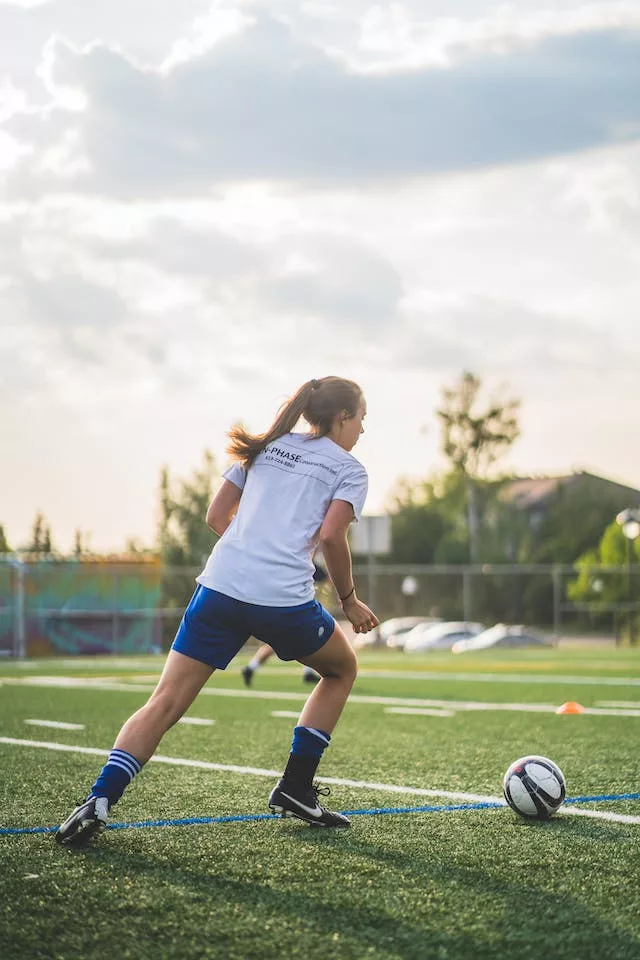
II. Understanding the Mechanism of Injuries
In football, the mechanism of Anterior Cruciate Ligament (ACL) injuries can be broadly classified into contact and non-contact types. The distinction is crucial in understanding how these injuries occur and in developing prevention strategies.
2.1 Non-contact vs. Contact Injuries
In a 2020 study titled “Systematic video analysis of ACL injuries in professional male football,” by. Della Villa F et al. (1), non-contact and indirect contact injuries were shown to be predominant, accounting for 88% of ACL injuries analyzed. The lack of external force in these scenarios points to the importance of the player’s own movement dynamics in causing the injury.
Conversely, contact injuries result from direct impact, such as during tackles. Although less common, they are significant due to the direct force applied to the knee, often in a vulnerable position.
2.2 Biomechanical Analysis
The biomechanics of ACL injuries in football/soccer encompass a range of injury patterns and contexts, highlighting the sport’s inherent risk factors. Going deeper in the 2020 study, “Systematic video analysis of ACL injuries in professional male football,” (1) we uncover critical insights. The study categorizes 44% of ACL injuries as non-contact in nature. These injuries typically occur due to destabilizing actions such as sudden changes in direction or improper landings, where no external force is directly involved.
Another 44% of the injuries are classified as resulting from indirect contact. In these cases, external forces contribute to the injury, but are not the direct cause. These scenarios often involve player-to-player contact in situations like pressing, tackling, or being tackled, where the injury results from the player’s response to the contact rather than the contact itself.
Central to both types of injuries is the knee valgus loading pattern, where the knee collapses inward. This biomechanical pattern is prevalent in various situational contexts, including non-contact maneuvers and indirect contact interactions. Understanding knee valgus loading is crucial for developing targeted prevention strategies for ACL injuries in football/soccer.
Furthermore, the 2013 review, “The biomechanics of ACL injury: progresses toward prophylactic strategies,” (4) adds depth to our understanding by associating these injuries with specific biomechanical factors and movements, from motion analyses to knee finite element simulations. It emphasizes that ACL injuries often occur during actions that destabilize the knee joint.
Combining insights from these studies, we see that ACL injury mechanisms in football are multifaceted. This intricate understanding is pivotal for coaches, trainers, and medical professionals in crafting effective injury prevention and management strategies. By recognizing and addressing these common movements and situational patterns, targeted training and preventive measures can be devised to mitigate the risk of ACL injuries, ensuring the safety and longevity of football players in this dynamic sport.
III. The Impact of Playing Surfaces and Shoes
3.1 Natural Grass vs. Artificial Turf
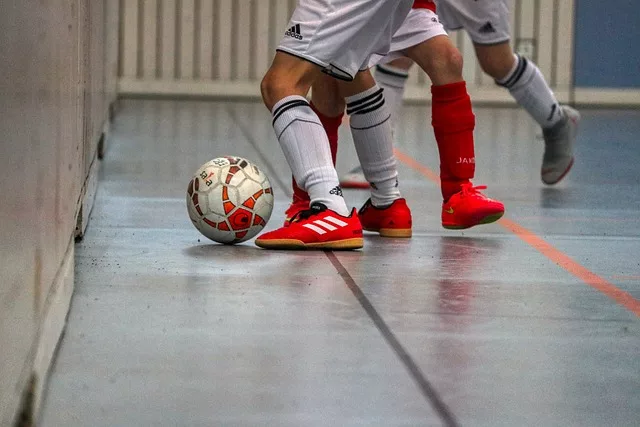
The playing surface in football, whether natural grass or artificial turf, significantly influences the risk of Anterior Cruciate Ligament (ACL) injuries. According to a study titled “Epidemiological Comparison of ACL Injuries on Different Playing Surfaces in High School Football and Soccer,” (5) ACL injuries were more likely to occur on artificial turf than on natural grass.
The study, which analyzed over a thousand ACL injuries, found distinct injury proportion ratios (IPRs) favoring artificial turf for higher injury occurrences in both football and girls’ soccer. This finding highlights the need for consideration of playing surfaces in injury prevention strategies.
3.2 Role of Footwear
Footwear also plays a critical role in the interaction between the player and the playing surface, impacting the risk of ACL injuries. A 2022 study examining the effects of footwear on ACL forces (6) during landing in young adult females demonstrated that different types of athletic shoes significantly influence ACL load during sports activities.
The study found that both low- and high-support shoes could lower peak ACL forces during push-off compared to being barefoot, suggesting a potential reduction in the risk of ACL injury. This underscores the importance of appropriate footwear selection to mitigate injury risks in football
IV. Role of Arthrometers in Injury Prevention and Monitoring
4.1 Robotic Arthrometer Overview: Introducing GNRB and DYNEELAX
The GNRB® and DYNEELAX® arthrometers, as robotic tools, play a crucial role in the dynamic testing and monitoring of knee injuries, particularly in the context of Anterior Cruciate Ligament (ACL) assessments in football (soccer). The GNRB arthrometer focuses on evaluating anterior tibial translation, providing precise measurements of the ACL’s resistance to forward motion of the tibia. This functionality is vital for assessing the integrity and strength of the ligament, particularly in pre-operative evaluations where it complements MRI findings by offering a dynamic assessment of the knee’s stability, but also in post-operative, to run close follow-up of the ligaments during rehabilitation.

Building upon the capabilities of the GNRB®, the DYNEELAX® arthrometer offers a more comprehensive analysis. Unlike the GNRB, which primarily measures anterior translation, DYNEELAX® assesses knee joint stability by applying both translation and rotation movements to the tibia. This dual-action approach enables DYNEELAX to identify not only translational instabilities but also rotational abnormalities in the knee joint. Such comprehensive analysis is crucial, especially for athletes in sports like football, where the knee is subjected to complex stresses involving multiple planes of movement.
DYNEELAX®‘s advanced assessment technique is particularly beneficial in pre-operative settings, providing a detailed understanding of the knee’s condition, which is essential for planning surgical interventions. Furthermore, it has been proven that partial ACL ruptures are better diagnosed with these arthrometers than with MRI in the 2023 study of Cojean et al. (7).
Post-operatively, both GNRB and DYNEELAX serve as invaluable tools for close monitoring of the rehabilitation process. They offer insights into the progress of healing and recovery, allowing for tailored rehabilitation protocols based on the individual’s specific knee dynamics. By tracking improvements or identifying persisting issues in both translational and rotational knee stability, these robotic arthrometers help ensure a safe and effective return to play for football athletes.
4.2 Benefits in Football (Soccer): Early Detection of Potential ACL Weaknesses or Deteriorations
In the high-stakes world of football, the early detection of potential ACL weaknesses or deteriorations is vital. Arthrometers play a key role in this, especially for players who have undergone ACL reconstruction. Regular assessments with these tools can pinpoint subtle changes that may indicate a risk of re-injury or incomplete recovery.
4.2.1 How are robotic arthrometers used in Football/Soccer?
Dynamic Arthrometer evaluations are typically conducted pre-season, during the season, and post-season, forming a crucial part of the players’ health and fitness monitoring. Utilizing these arthrometers, clubs can gather dynamic data on each player’s knee health, which is invaluable for injury prevention and management.
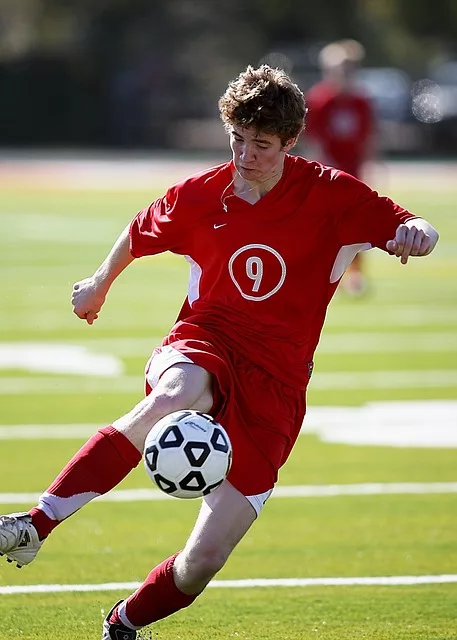
Pre-season testing with arthrometers allows medical teams to establish a baseline of knee health for each player. This baseline is pivotal in detecting any deviations that might occur during the season, signaling potential issues or emerging injuries.
Mid-season assessments provide insights into the impacts of regular play on knee stability, enabling timely interventions to prevent more severe injuries.
Finally, post-season evaluations help in assessing any wear and tear or injuries sustained during the season, guiding off-season recovery and conditioning programs.
The dynamic results obtained from these tests offer crucial data that inform decision-making around training intensity, game readiness, and rehabilitation needs. For instance, a player showing signs of increased knee laxity mid-season might require modified training or temporary rest to prevent a full-blown ACL injury. Similarly, the post-season data can influence off-season conditioning programs, ensuring that players return for the next season in optimal knee health.
Incorporating these comprehensive evaluations using GNRB® and DYNEELAX® arthrometers into routine health assessments of football players significantly enhances a club’s ability to maintain its athletes’ peak physical condition and reduces the risk of debilitating injuries like ACL ruptures. This proactive approach exemplifies the merging of advanced sports medicine technologies with athletic care and management, underlining the evolving landscape of injury prevention and management in professional sports.
Here are images showcasing famous football clubs AS Monaco and FC Barcelona, highlighting their acquisition of indispensable, high-tech arthrometer equipment.
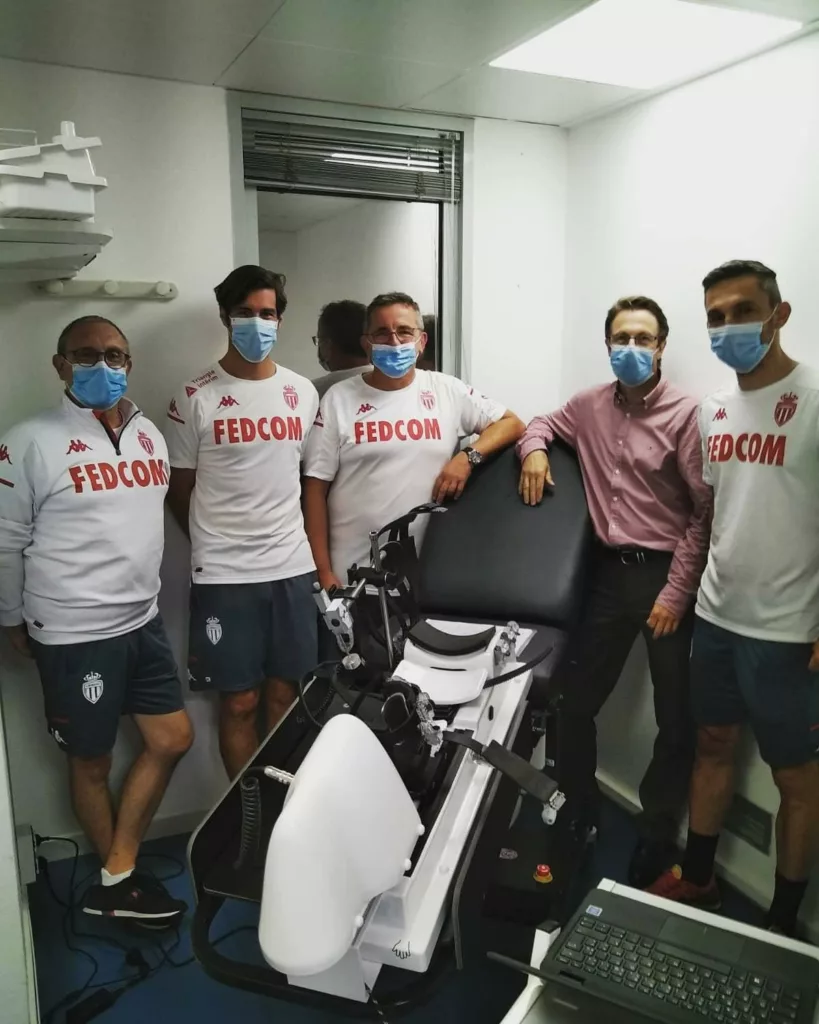
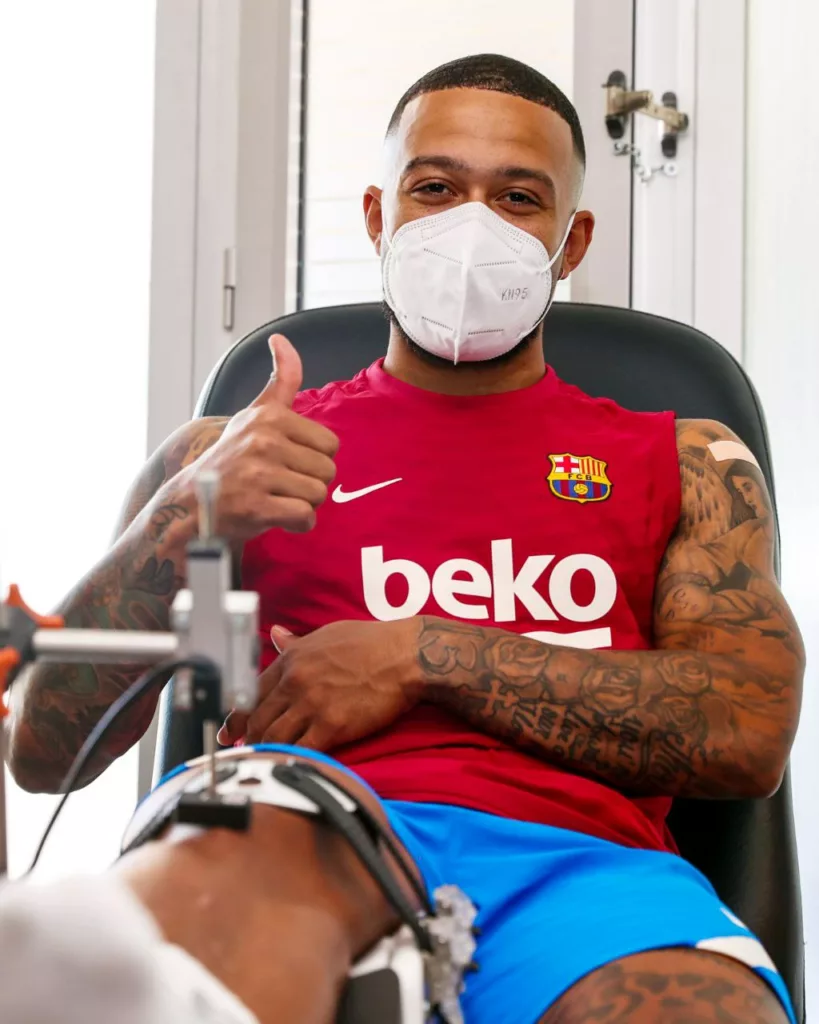
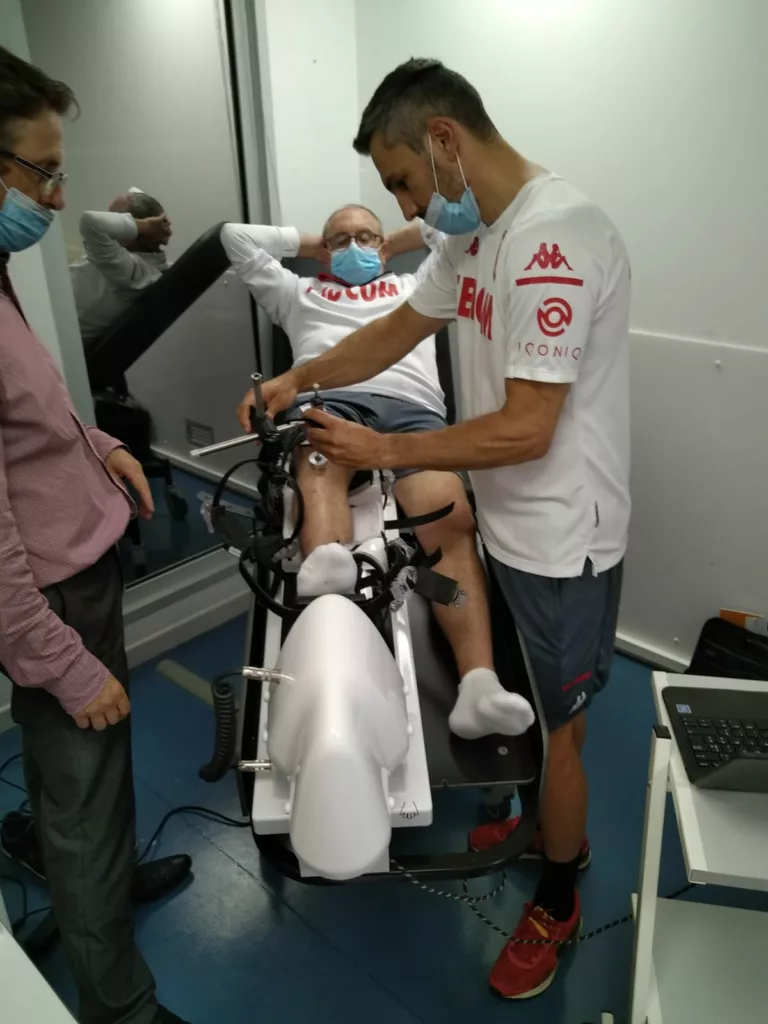
4.2.2 Research Papers showing the importance of evaluating knee laxity in football (soccer)
The 2018 study “Strength recovery after anterior cruciate ligament reconstruction with quadriceps tendon versus hamstring tendon autografts in soccer players” (8) from the famous review, “The Knee” underscores the importance of monitoring during the recovery process after ACL reconstruction. It highlights how regular assessments ensure the reconstructed ligament heals properly and regains strength, thereby reducing the risk of re-injury.
Another significant contribution comes from the 2021 study “Altered Knee Laxity and Stiffness in Response to a Soccer Match Simulation in Players Returning to Sport Within 12 Months After Anterior Cruciate Ligament Reconstruction.” (9). This research focuses on changes in knee laxity and stiffness due to the physical demands of a soccer match, particularly crucial for players in the delicate phase of returning to sport post-ACL reconstruction. It underscores the importance of dynamic assessments in determining a player’s readiness to return to play.
Adding to this, the Forelli study, titled “Ecological and Specific Evidence-Based Safe Return To Play After Anterior Cruciate Ligament Reconstruction In Soccer Players: A New International Paradigm,” (10) published in 2023, emphasizes the importance of comprehensive testing, including robotic arthrometers like the GNRB® and DYNEELAX®. This study advocates for an ecological approach to Return To Play (RTP) assessments, integrating clinical analyses with field testing under game-like conditions. It highlights how arthrometers, combined with a battery of tests, can provide a more complete picture of a player‘s readiness to return to play, ensuring a safer and more effective RTP decision-making process.
Nowadays, arthrometers such as GNRB and Dyneelax are indispensable in modern football for injury prevention and management. Their ability to provide precise measurements and monitor changes in the ACL post-reconstruction offers an invaluable tool for ensuring player safety and optimal performance. The integration of these technologies, as suggested by the Forelli study, into a comprehensive testing protocol marks a significant advancement in sports medicine, offering a proactive approach to safeguarding the health and careers of football players.
4.3 Additional Clinical Validation: GNRB and Dyneelax in Action
In sports medicine, particularly in football (soccer), the accuracy and reliability of injury diagnosis and rehabilitation are paramount. The GNRB® and DYNEELAX® arthrometers have significantly advanced this field, offering precise measurements of knee laxity crucial for ACL injury management. These tools have been clinically validated through various studies, which have demonstrated their effectiveness in detecting partial ACL tears, ensuring reliable knee anterior laxity measurements, and aiding in comprehensive ACL assessment. Such validation highlights the critical role of GNRB and DYNEELAX in enhancing diagnostic accuracy and informing effective rehabilitation strategies, making them indispensable in modern sports medicine and injury management.
4.3.1 Pre-Operative Clinical Validation
The section begins by underscoring the importance of precise and reliable pre-operative assessments in ACL reconstruction surgeries. It emphasizes the role of advanced diagnostic tools, particularly the GNRB® and DYNEELAX® arthrometers, in enhancing the accuracy of knee injury evaluations. These technologies represent significant improvements over traditional methods, offering clinicians a comprehensive and objective analysis critical for optimal surgical planning and outcomes.
4.3.1.1 Automated Anterior/Posterior Tibial Translation Analysis:
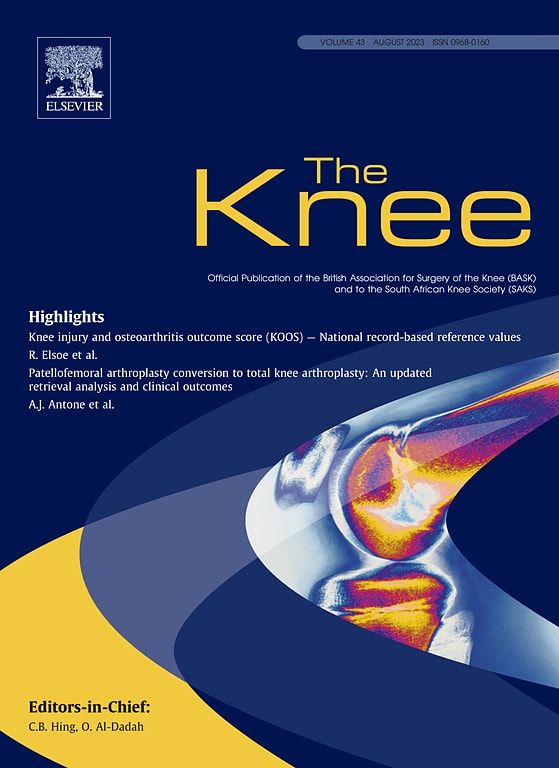
The GNRB® robotic arthrometer, an advancement over manual methods like the Lachman test, offers precise, consistent measurements for ACL and PCL diagnostics. It overcomes the subjectivity of manual tests by applying uniform force and measuring tibial translation.
Studies validating the GNRB®:
- 2023, Théo Cojean et al.(7): Demonstrated GNRB®’s higher sensitivity (73.77%) compared to MRI (29.51%) in detecting partial ACL tears.
- 2022, Miha Magdič et al.(11): Confirmed good intra-rater reliability of the GNRB® in measuring knee anterior laxity.
- 2015, Klouche et al.(12): Proved GNRB®’s diagnostic accuracy in identifying complete ACL tears.
- 2017, Jenny et al.(13): Validated GNRB® for measuring anterior tibial translation.
- 2022, Kayla Smith et al.(14): Highlighted GNRB®’s reliability in assessing ACL stiffness and laxity.
- And Many more…
4.3.1.2 Medial/Lateral Tibial Rotation Assessments:
The DYNEELAX® arthrometer is a significant development for measuring translation & rotational stability, surpassing the pivot shift test’s subjective limitations.
It provides precise assessments of medial and lateral knee rotation and extends to analyze the ACL, the PCL, the Anteromedial (AM), Posterolateral (PL), Anterolateral (AL), and Posteromedial (PM) corners of the knee. It should be noted that all the studies of the GNRB can also be applied to the DYNEELAX® because GNRB® technology has been incorporated in the DYNEELAX®.
Studies supporting DYNEELAX®‘s Rotation Analysis (We focus on rotation assessments here as translation has just been put forward with the GNRB®):
-
- 2014, Mouton et al.(15): Emphasized the importance of combining anterior and rotational laxity measurements.
- 2015, Mouton et al.(16): Validated the combined measurement approach.
- 2016, Nicolas Ruiz et al.(17): Explored the ACL’s and anterolateral structures’ roles in knee rotational dynamics.
- 2017, Senioris et al.(18): Confirmed the importance of assessing rotational laxity with anterior translation.
- 2023, Théo Cojean et al.(19): Evaluated the sensitivity, repeatability, and reproducibility of the Dyneelax.
- And Many more…
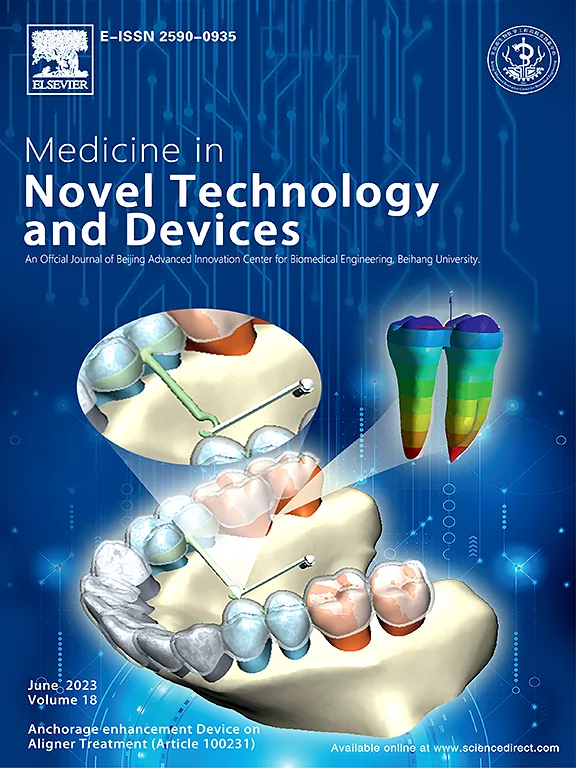
4.3.2 Post-Operative Clinical Validation

Key studies supporting the use of robotic arthrometers in rehabilitation include:
- 2016, Semay et al. (20): Demonstrated the usefulness of the GNRB in monitoring anteroposterior laxity after surgery, aiding in tailoring rehabilitation plans.
- 2017, Nouveau et al.(21): Highlighted the significance of understanding changes in graft compliance over time for effective rehabilitation management.
- 2023, Forelli et al.(10): Emphasized integrating arthrometer assessments into rehabilitation programs for a safer return to activities.
- 2019, Pouderoux et al.(22): Analyzed the evolution of joint laxity and graft compliance post-ACL surgery, suggesting the importance of stabilizing these factors before returning to high-impact sports.
V. Preventive Strategies and Rehabilitation
5.1 Injury Prevention Programs
ACL injuries, particularly concerning for football players, can be mitigated through exercise-based interventions. A 2021 systematic review titled “Exercise-Based Training Strategies to Reduce the Incidence or Mitigate the Risk Factors of Anterior Cruciate Ligament Injury in Adult Football (Soccer) Players” (23) explores this aspect comprehensively.
The study evaluated various training interventions like warm-up routines, resistance training, mixed training, balance, core stability, and technique modification. These interventions were found effective in either reducing the ACL injury rate or mitigating risk factors in adult football players. The review, encompassing 29 studies with over 4502 male and 1589 female players, highlights the importance of warm-up, core stability, balance, and technique modification as feasible interventions. However, it also emphasizes the need for more ecologically valid tests and individually tailored interventions that target specific ACL injury mechanisms. Arthrometers are there
5.2 Post-Injury Rehabilitation: Role of Arthrometers
In the realm of post-injury rehabilitation, arthrometers like GNRB® and DYNEELAX® play a pivotal role. These tools are instrumental in closely monitoring the progress of ligament healing and recovery. By providing detailed assessments of the knee’s laxity and stability, they help in tailoring rehabilitation programs to the specific needs of the recovering athlete. Regular assessments with these arthrometers enable a data-driven approach to rehabilitation, ensuring that each stage of recovery is optimized for the best possible outcome. This approach is particularly crucial in sports like football, where returning to the field too soon or without adequate recovery can significantly increase the risk of re-injury. Read 2016, Semay et al. (20), 2017, Nouveau et al. (21), 2023, Forelli et al.(10), 2019, Pouderoux et al.(22) for more info.
The combination of tailored exercise-based training strategies and the use of advanced arthrometers in rehabilitation represents a comprehensive approach to reducing ACL injury rates and enhancing recovery in football players. This dual strategy not only helps in preventing initial injuries but also ensures effective recovery and safe return to play post-injury.
VI. The Road to Recovery: Clinical Outcomes and Challenges
6.1 Recovery Journey
The recovery journey post-ACL injury, particularly after ACL reconstruction (ACLR), is a comprehensive process that involves multiple stages, each critical to the athlete’s return to optimal performance.
The 2023 systematic review “Clinical Outcomes After ACL Reconstruction in Soccer Players” (24) provides insights into this journey, highlighting the varied recovery timeline and the challenges faced by soccer players. The study, encompassing 32 studies with 3112 soccer players, indicates that the recovery time to return to play ranges between 6.1 and 11.1 months. During this period, the focus is on regaining strength, flexibility, and stability, with tailored rehabilitation programs addressing the specific needs of each athlete.
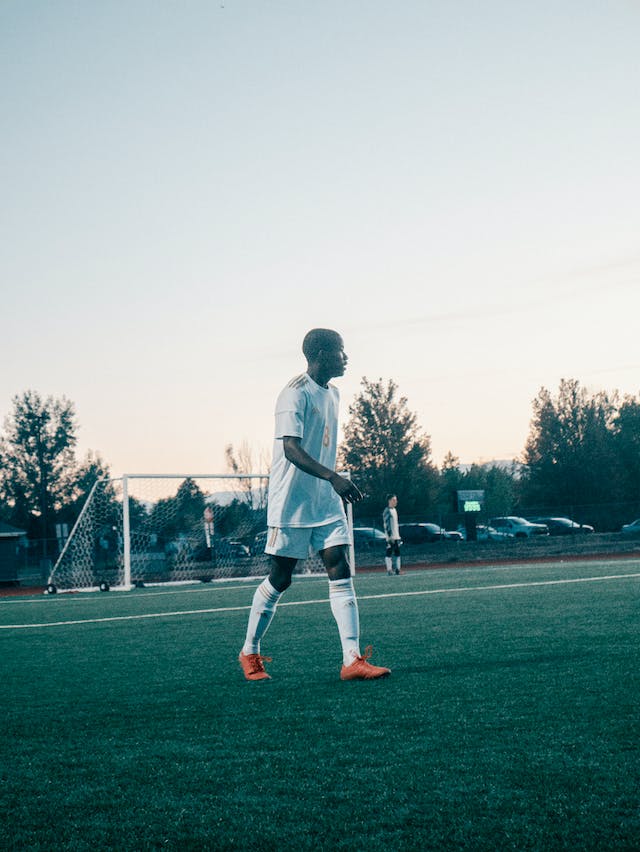
6.2 Role of Continuous Monitoring
Continuous monitoring plays a vital role in the post-injury rehabilitation process, particularly in assessing the healing and functionality of the reconstructed ligament. Tools like the GNRB® and DYNEELAX® arthrometers are instrumental in this phase, providing objective data on the knee’s laxity and stability. These measurements allow for a data-driven rehabilitation process, ensuring that recovery is proceeding at an optimal pace and that the athlete is ready for the physical demands of soccer.
The 2023 systematic review “Clinical Outcomes After ACL Reconstruction in Soccer Players” (24) underscores the importance of such monitoring, as it highlights a significant range in graft failure/reoperation rates (3.0% to 24.8%) and the incidence of secondary ACL injuries (1.0% to 16.7%). These statistics emphasize the need for close monitoring to prevent re-injuries and ensure successful long-term outcomes. The utilization of arthrometers in post-ACLR rehabilitation allows for precise tracking of progress and aids in making informed decisions about the athlete’s readiness to return to play.
For instance, the 2017, Nouveau et al. (21) study discusses the importance of assessing the compliance of ACL grafts over time, highlighting the GNRB arthrometer’s ability to accurately measure force/displacement curves of the ACL graft. Similarly, the 2023, Forelli et al. study (10) emphasizes the need for comprehensive, ecological Return to Play (RTP) assessments, integrating clinical and field tests to evaluate players under realistic conditions. The study underscores the importance of using robotic laximeters like GNRB®/DYNEELAX® for graft laxity assessment, providing critical data for RTP decisions. These tools establish dynamic compliance curves, offering a clear picture of the functional instability risk and aiding in making safer RTP determinations
The recovery journey post-ACL injury in soccer players is a multifaceted process that requires careful planning, monitoring, and individualized rehabilitation strategies. The integration of advanced tools like GNRB and Dyneelax arthrometers in this process enhances the efficacy of rehabilitation, providing athletes with the best opportunity for a successful and safe return to the sport
VII. Long-term Implications and Future Directions
7.1 Career Impact
ACL injuries have a profound impact on the careers of football players. A 15-year prospective study, “ACL injuries in men’s professional football,” done in 2016 (25) highlights the long-term consequences these injuries have on players’ careers. This extensive study tracked the incidence and effects of ACL injuries, revealing that such injuries not only lead to significant time away from the game but also can alter the trajectory of a player’s career. Players often face challenges in returning to their pre-injury performance levels, and there is an increased risk of re-injury or developing long-term joint issues, which can affect their longevity in the sport.
7.2 Future Research and Developments

The need for ongoing research and the development of new technologies in managing ACL injuries is paramount. Current trends in sports medicine indicate a shift towards more personalized and technologically advanced approaches to injury management. This includes the development of more sophisticated diagnostic tools, like advanced arthrometers, and tailored rehabilitation protocols that leverage data analytics and biomechanical assessments.
Future research should focus on refining these tools and methods to enhance their effectiveness and accessibility for athletes at all levels. Additionally, there is a growing emphasis on understanding the psychological aspects of injury recovery, recognizing that mental resilience and confidence play critical roles in successful return-to-play outcomes.
VIII. Special Focus on Youth Players
8.1 Youth Players and ACL Reconstruction
ACL injuries in youth soccer players, especially those with the potential to become elite athletes, present unique challenges and opportunities. The 2021 study, “Can Talented Youth Soccer Players Who Have Undergone Anterior Cruciate Ligament Reconstruction Reach the Elite Level?”(26) investigates the impact of ACL reconstruction on young players’ prospects of reaching senior-level elite play. It found that ACL reconstruction does not significantly affect the ability of youth players to remain active or play at an elite level.
The study analyzed players who participated in the Swedish National Elite Camp and underwent ACL reconstruction between the ages of 15 to 19. Interestingly, the study discovered that 12% of the male players and 11.5% of the female players who underwent ACL reconstruction progressed to the elite level at the age of 21, comparable to uninjured peers


ACL injuries in football/soccer not only affect immediate playing ability but also have long-lasting implications on a player’s career. The integration of advanced technologies and ongoing research in this field are essential for improving long-term outcomes and assisting players in safely achieving their full potential post-injury.
8.2 Importance of Early Detection and Monitoring
Early detection and monitoring of ACL health are crucial in youth players, where the stakes for long-term career prospects are high. The use of arthrometers like GNRB® and DYNEELAX® in this context becomes invaluable. These tools offer precise assessments of knee health, enabling early intervention strategies to prevent injuries and ensure effective rehabilitation. Continuous monitoring with arthrometers helps track the healing process and gauge readiness for a return to play, thus playing a pivotal role in managing the recovery journey of young athletes. Again, read 2016, Semay et al. (20), 2017, Nouveau et al. (21), 2023, Forelli et al.(10), 2019, Pouderoux et al.(22) for more info.
Adding to this, a pivotal 2021 study by Brian Forsythe et al.(27) indicates that timing is critical in ACL reconstruction surgery, especially for youth players. The research highlights that postponing ACL reconstruction surgery beyond six months after the injury can diminish the likelihood of achieving significant improvement. Moreover, this delay increases the probability of needing further ACL revision surgeries. Patients who had surgery after this period were less likely to achieve patient-acceptable symptomatic states (PASS) and had a higher likelihood of requiring revision ACL reconstruction. This suggests that delaying surgery might lead to poorer outcomes and an increased chance of relapse, emphasizing the importance of timely medical intervention.
Overall, the ability to successfully return to elite-level play post-ACL reconstruction in youth players, along with the use of advanced tools for early detection and continuous monitoring, underscores the importance of a comprehensive approach in managing ACL injuries. This approach not only aids in recovery but also ensures that young athletes have the best possible chance to realize their full potential in their sporting careers.
Conclusion
As we reflect on the insights gathered about ACL injuries in football/soccer, it’s clear that these injuries are not just a matter of physical recovery but also involve advanced diagnostic and rehabilitation strategies. The integration of arthrometers like GNRB and DYNEELAX into sports medicine represents a significant leap forward. These tools have proven indispensable in accurately diagnosing ACL injuries, monitoring the intricate process of ligament healing, and ensuring effective rehabilitation.
The studies and research discussed highlight a multi-faceted approach to ACL injury management. From the importance of early detection and individualized training programs to the critical role of timely surgical interventions and continuous post-operative monitoring, each aspect plays a vital role in an athlete’s recovery journey. The emergence of technologies such as GNRB and Dynelax arthrometers in football has opened new avenues for more precise and targeted injury management strategies.
Looking ahead, the evolving nature of sports medicine continues to offer promising prospects in injury prevention and management. With ongoing research and technological advancements, the field is poised to provide even more effective solutions for athletes. The goal remains clear: to safeguard the health and careers of football players, ensuring they can perform at their best while minimizing the risk of debilitating injuries. As we embrace these advancements, the future of sports medicine in football looks brighter, offering hope and reassurance to players, coaches, and medical professionals alike.
Medical References (Link In DOI)
- Della Villa F, Buckthorpe M, Grassi A, Nabiuzzi A, Tosarelli F, Zaffagnini S, Virgile A, Della Villa S. (2020). Infographic. Systematic video analysis of ACL injuries in professional male football (soccer): injury mechanisms, situational patterns and biomechanics study on 134 consecutive cases. Br J Sports Med. DOI: 10.1136/bjsports-2020-103241
- Volpi P, et al. (2016). Risk factors of anterior cruciate ligament injury in football players: a systematic review of the literature. Muscles Ligaments and Tendons Journal, 6(4), 480-485. DOI: 10.11138/mltj/2016.6.4.480
- Bisciotti GN, Chamari K, Cena E, Bisciotti A, Bisciotti A, Corsini A, Volpi P. (2019). Anterior cruciate ligament injury risk factors in football. J Sports Med Phys Fitness, 59(10), 1724-1738. DOI: 10.23736/S0022-4707.19.09563-X
- Hernandez Barraza LC, Krishnan GR, Low J-H, Yeow C-H. (2013). The biomechanics of ACL injury: progresses toward prophylactic strategies. Crit Rev Biomed Eng, 41(4-5), 309-21. DOI: 10.1615/critrevbiomedeng.2014010460
- Ngatuvai MS, Yang J, Kistamgari S, Collins CL, Smith GA. (2022). Epidemiological Comparison of ACL Injuries on Different Playing Surfaces in High School Football and Soccer. Orthop J Sports Med, 10(5):23259671221092321. DOI: 10.1177/23259671221092321
- Akhundov R, Bryant AL, Sayer T, Paterson K, Saxby DJ, Nasseri A. (2022). Effects of Footwear on Anterior Cruciate Ligament Forces during Landing in Young Adult Females. Life (Basel), 12(8):1119. DOI: 10.3390/life12081119
- Cojean T, Batailler C, Robert H, Cheze L. (2023). GNRB® laximeter with magnetic resonance imaging in clinical practice for complete and partial anterior cruciate ligament tears detection: A prospective diagnostic study with arthroscopic validation on 214 patients. Knee, 42, 373-381. DOI: 10.1016/j.knee.2023.03.017
- Martin-Alguacil JL, Arroyo-Morales M, Martín-Gomez JL, Monje-Cabrera IM, Abellán-Guillén JF, Esparza-Ros F, Lozano Lozano M, Cantarero-Villanueva I. (2018). Strength recovery after anterior cruciate ligament reconstruction with quadriceps tendon versus hamstring tendon autografts in soccer players: A randomized controlled trial. Knee, 25(4), 704-714. DOI: 10.1016/j.knee.2018.03.011
- Nuccio S, Labanca L, Rocchi JE, Mariani PP, Sbriccoli P, Macaluso A. (2021). Altered Knee Laxity and Stiffness in Response to a Soccer Match Simulation in Players Returning to Sport Within 12 Months After Anterior Cruciate Ligament Reconstruction. Am J Sports Med, 49(8), 2150-2158. DOI: 10.1177/03635465211013020
- Forelli F, Le Coroller N, Gaspar M, et al. (2023). Ecological and Specific Evidence-Based Safe Return To Play After Anterior Cruciate Ligament Reconstruction In Soccer Players: A New International Paradigm. IJSPT. Published online April 2, 2023. DOI: 10.26603/001c.73031
- Magdić M, Gošnak Dahmane R, Vauhnik R. (2023). Intra-rater reliability of the knee arthrometer GNRB® for measuring knee anterior laxity in healthy active subjects. Journal of Orthopaedics. DOI: 10.1016/j.jor.2023.03.016
- Klouche S, Lefevre N, Cascua S, Herman S, Gerometta A, Bohu Y. (2015). Diagnostic value of the GNRB® in relation to pressure load for complete ACL tears: A prospective case-control study of 118 subjects. Orthopaedics & Traumatology: Surgery & Research, 101(3), 297–300. DOI: 10.1016/j.otsr.2015.01.008
- Jenny J-Y, Puliero B, Schockmel G, Harnoist S, Clavert P. (2017). Experimental validation of the GNRB® for measuring anterior tibial translation. Orthopaedics & Traumatology: Surgery & Research. Received: 7 October 2016, Accepted: 30 December 2016 DOI: 10.1016/j.otsr.2016.12.011
- Smith K, Miller N, Laslovich S. (2022). The Reliability of the GNRB® Knee Arthrometer in Measuring ACL Stiffness and Laxity: Implications for Clinical Use and Clinical Trial Design. Int J Sports Phys Ther, 17(6), 1016-1025. DOI: 10.26603/001c.38252
- Mouton, C., Seil, R., Meyer, T., Agostinis, H., Theisen, D. (2015). Combined anterior and rotational laxity measurements allow characterizing personal knee laxity profiles in healthy individuals. Knee Surgery, Sports Traumatology, Arthroscopy, 23, 3571-3577. DOI: 10.1007/s00167-014-3244-6.
- Mouton, C., Theisen, D., Meyer, T., Agostinis, H., Nührenbörger, C., Pape, D., Seil, R. (2015). Combined anterior and rotational knee laxity measurements improve the diagnosis of anterior cruciate ligament injuries. Knee Surgery, Sports Traumatology, Arthroscopy, 23, 2859-2867. DOI: 10.1007/s00167-015-3757-7
- Ruiz, N., Filippi, G.J., Gagnière, B., Bowen, M., Robert, H.E. (2016). The Comparative Role of the Anterior Cruciate Ligament and Anterolateral Structures in Controlling Passive Internal Rotation of the Knee: A Biomechanical Study. DOI: 10.1016/j.arthro.2016.02.017
- Senioris, A., Rousseau, T., L’Hermette, M., Gouzy, S., Duparc, F., Dujardin, F. (2017). Validity of rotational laxity coupled with anterior translation of the knee: A cadaveric study comparing radiostereometry and the Rotab®. DOI: 10.1016/j.knee.2017.01.009
- Cojean, T., Batailler, C., Robert, H., Cheze, L. (2023). Sensitivity repeatability and reproducibility study with a leg prototype of a recently developed knee arthrometer: The DYNEELAX®. Medicine in Novel Technology and Devices, 19, 100254. DOI: 10.1016/j.medntd.2023.100254
- Semay, B., Rambaud, A., Philippot, R., Edouard, P. (2016). Evolution of the anteroposterior laxity by GnRB at 6 9 and 12 months post-surgical anterior cruciate ligament reconstruction. DOI: 10.1016/j.rehab.2016.07.045
- Nouveau, S., Robert, H., Viel, T. (2017). ACL Grafts Compliance During Time: Influence of Early Solicitations on the Final Stiffness of the Graft after Surgery. Journal of Orthopedic Research and Physiotherapy, 3(1), 035. DOI: 10.24966/ORP-2052/100035
- Pouderoux, T., Muller, B., Robert, H. (2019). Joint laxity and graft compliance increase during the first year following ACL reconstruction with short hamstring tendon grafts.. DOI: 10.1007/s00167-019-05711-z
- Olivares-Jabalera, J., Fílter-Ruger, A., Dos’Santos, T., Afonso, J., Della Villa, F., Morente-Sánchez, J., Soto-Hermoso, V.M., Requena, B. (2021). Exercise-Based Training Strategies to Reduce the Incidence or Mitigate the Risk Factors of Anterior Cruciate Ligament Injury in Adult Football (Soccer) Players: A Systematic Review. Int J Environ Res Public Health, 18(24), 13351. DOI: 10.3390/ijerph182413351
- Hong, I.S., Pierpoint, L.A., Hellwinkel, J.E., Berk, A.N., Salandra, J.M., Meade, J.D., Piasecki, D.P., Fleischli, J.E., Ahmad, C.S., Trofa, D.P., Saltzman, B.M. (2023). Clinical Outcomes After ACL Reconstruction in Soccer (Football, Futbol) Players: A Systematic Review and Meta-Analysis. Sports Health, 15(6), 788-804. DOI: 10.1177/19417381231160167
- Waldén, M., Hägglund, M., Magnusson, H., Ekstrand, J. (2016). ACL injuries in men’s professional football: a 15-year prospective study on time trends and return-to-play rates reveals only 65% of players still play at the top level 3 years after ACL rupture. Br J Sports Med, 50(12), 744-750. DOI: 10.1136/bjsports-2015-095952
- Sandon, A., Söderström, T., Stenling, A., Forssblad, M. (2021). Can Talented Youth Soccer Players Who Have Undergone Anterior Cruciate Ligament Reconstruction Reach the Elite Level? Am J Sports Med, 49(2), 384-390. DOI: 10.1177/0363546520976651.
- Forsythe B, Lu Y, Agarwalla A, Ezuma CO, Patel BH, Nwachukwu BU, Beletsky A, Chahla J, Kym CR, Yanke AB, Cole BJ, Bush-Joseph CA, Bach BR, Verma NN. (2021). Delaying ACL reconstruction beyond 6 months from injury impacts likelihood for clinically significant outcome improvement. Knee, 33, 290-297. DOI: 10.1016/j.knee.2021.10.010


